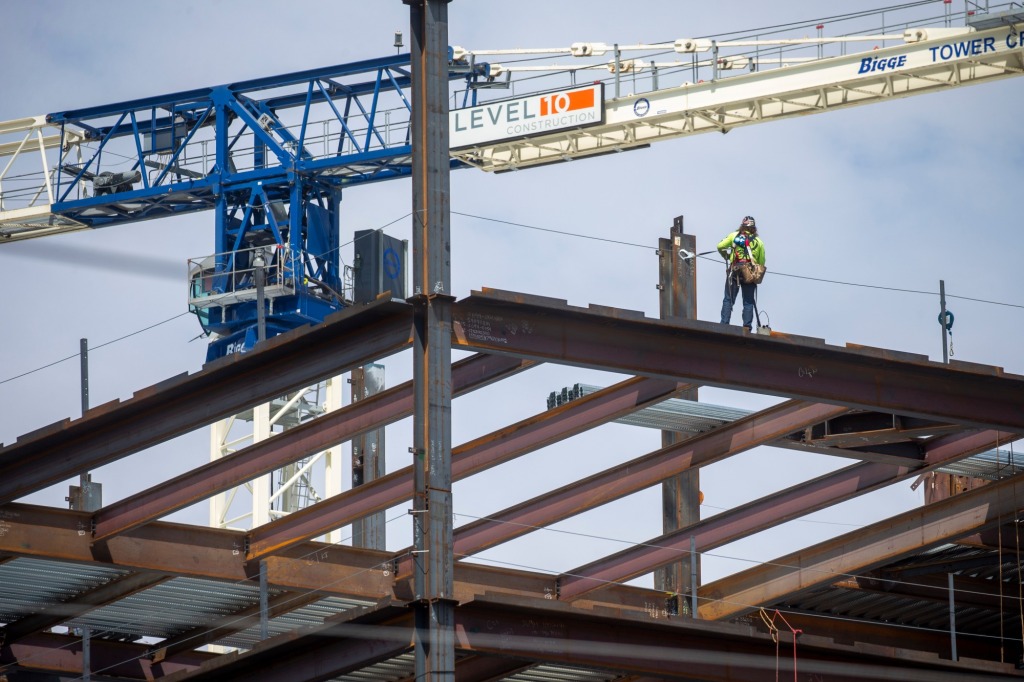To put a dent in its chronic housing shortage, San Jose is planning for as many as 77,500 new homes over the next decade — potentially expanding the total number of households in the Bay Area’s largest city by almost a quarter.
Where will it all go in a city of about 1 million residents that is desperate to increase its stock of affordable housing while also preventing suburban sprawl? The answers are beginning to emerge in a 148-page housing plan that is still falling short of expectations from regulators.
So far, the city has designated over 600 sites for new housing. The majority are in downtown and the Diridon Station area, though planners have identified parcels throughout the city. Major thoroughfares such as Stevens Creek and Winchester boulevards also could see many more homes.
“The logic is sustainable growth, particularly for lower-income people along corridors that can help with transportation if they don’t have a car,” said Mathew Reed, policy director with SV@Home, a housing advocacy group.
San Jose is not going to build all of that housing itself. Most of the construction would be done by private developers. But under state law, the city must specify sites to accommodate at least 62,200 more homes for residents of all incomes between 2023 and 2031. That’s a 77% jump from its previous eight-year housing goal.
The city describes how it intends to meet and possibly surpass that ambitious state-mandated target in its “housing element” plan. But this month, regulators said a draft of the plan still doesn’t go far enough in explaining where and how new housing will be built.
By the end of January, under new state rules, all Bay Area cities must finalize their housing elements, or risk missing out on grant funding and facing other penalties. San Jose, like some other cities in the region, has no intention of actually meeting that deadline.
Even so, housing advocates and city officials say that because San Jose is making a good-faith push to finalize its plan by the end of spring, they’re not expecting any serious punishment by the state.
“We’re not surprised they’re not going to make the deadline, and generally we think it’s because they’re working hard, not because they’re hardly working,” Reed said.
Already approved or planned “pipeline” projects account for over 11,500 of the new units. The rest could go on “opportunity sites” where housing has yet to be planned, but that the city has determined have a realistic chance of development over the next eight years.
The state also is requiring cities to plan for more affordable housing in “high-resource” neighborhoods with a history of locking out low-income residents and households of color. San Jose has designated sites for affordable housing in the wealthier southwest part of the city, notably along De Anza Boulevard bordering Cupertino.
For the current eight-year housing cycle now coming to a close, San Jose, like most Bay Area cities, has fallen far short of meeting its state-mandated goals for affordable housing. It’s approved less than half of its low-income target of 14,661 units. That number will increase to 23,775 starting next year.
This time around, there are actual stakes for meeting the state’s planning requirements.
If cities fail to get state officials to sign off on their housing elements by Jan. 31, they could miss out on affordable housing funding and lose control over approving new homes. So far, only a handful of Bay Area cities including Alameda and Emeryville have gotten approval.
In a Dec. 15 letter, state regulators said San Jose must update its housing element to prove the parcels identified for new homes can actually be developed within the eight-year timeframe. The city must also show how it will more quickly phase in new housing policies, among other requests.
While city officials acknowledge they won’t meet all the state’s demands by the upcoming deadline, they don’t believe San Jose is at a “high risk of losing state funding” or getting hit with other penalties.
“Because many cities are short of the finish line … we are hearing that the state is updating their regulations for some leniency with jurisdictions that are making good faith efforts toward a final, certified Housing Element,” the San Jose Planning, Building and Code Enforcement Department said in a statement.










